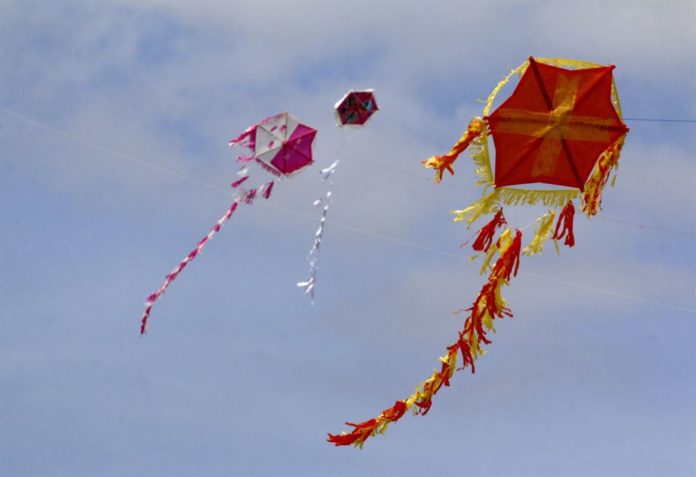How did Does kite; Whence comes the custom of flying kites on Clean Monday; What truth is history and what is the name that has the kite in various countries around the world;……..
The kite flies for the first time around 200 BC in China and Malaysia. There the first kites made of silk and bamboo and even the format has mostly so far in these countries, which is none other than the form of the dragon.
Chinese kites traveling in Korea and Japan to be enriched with more projects.
round 1400 AD Europeans explorers who travel to Asian countries bring their kites in the old continent, wherein during both World Wars used as observation equipment.
The purpose of the custom of kite
The purpose of the custom in ancient China was the communication between man and God. Indeed people then believed that as high fly the kite, the more likely he was God seeing their wishes hanging on it and make the!
The symbolism of flying the kite in the Greek Christian tradition is relevant enough, as symbolizing the flight of the human soul to the Divine.
In other words he wants to say that the destination of the human spirit is in heaven beside the creator. And the fact, that the custom every year on Shrove Tuesday is anything but coincidence is, as performed on the first day of Lent, when Christians begin their physical and spiritual purification through fasting of Lent.
in any case, beyond the religious dimension, the kite previously had other uses of and used for weather forecasts, military espionage, even for transferring items to inaccessible areas, while the American inventor Benjamin Franklin invented the lightning rod through experiments made with a kite and a key!
The custom of kite flying today worldwide
Today, every country has its own customs around the flying kite. In China ierotelesteia considered the construction of up to flying and even organized competitions every year for the best kite. indeed, the Chinese believe even today that flying the kite turn away bad luck and that the higher reaches their eagle, the better chance you have.
In Osaka, Japan, each year, the fifth day of May, small Japanese await the Kontomono-x or else the Day of Children. That day, families that have younger sons tend the garden waving colorful ribbons and huge carp kites in shape, that they have been tied into a long pole of bamboo with a windmill on top of.
One of the most spectacular celebrations performed for thousands of years in North India, is the feast "Basant", which takes place every February in Pakistan in spring reception. Merits set up a big feast, which eagerly await young and old. In this celebration, all yearn to conquer with their kite heaven, which will ensure the use of good materials more, and especially durable twine, which is coated with a glass powder. Together with the materials, what determines the victory is the skillful manipulations made mainly from rooftops of houses.
In Greece kites were made of children with or without the help of large with simple materials such as paper, reed or thin lath, twine and newspapers and leftovers from Halloween ribbons.
The names of the kite in different countries:
In England, called kite, which is the name of a magnificent bird
In Japan, Tacoma meaning octopus has to do with many strings hanging from it.
In Mexico they call papalote means butterfly
In Germany, Drachen means dragon
In our country, beyond the classical name kite, Thrace his name and Petak, while in the Ionian Islands and bellows.
